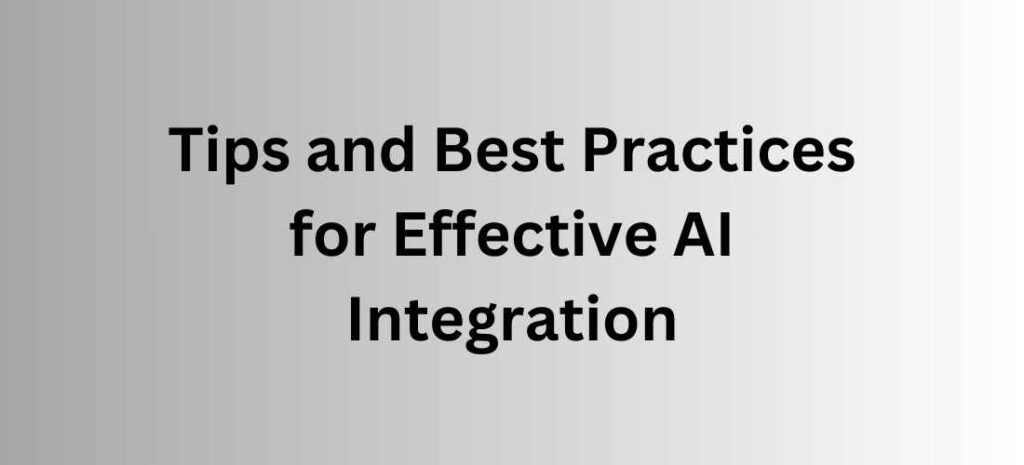The journey of AI (Artificial Intelligence) technology has been exciting. Earlier, AI was seen only in science fiction movies, but today AI has made its place in every field, including WordPress AI integration. Since the 1950s, there have been many advancements in AI. In the initial stages, AI operated with basic algorithms and limited data. But today, AI can solve complex problems using deep learning, neural networks, and big data. With WordPress AI integration, AI technologies are making breakthroughs every day, increasing their impact across industries.
Today, the role of AI has become important in digital marketing and website management. In digital marketing, AI tools help in personalization and customer behavior analysis. For example, AI algorithms can create targeted advertisements by analyzing customer preferences. When it comes to website management, AI chatbots and virtual assistants handle users’ queries, thereby improving customer service. With WordPress AI integration, these tools streamline everything from content generation to SEO optimization, making WordPress sites more efficient and customer-centric.
Why AI Integration Matters for WordPress Users
Enhanced Functionality:
Integrating AI tools with your WordPress site adds new features and capabilities. With AI-driven tools, you can personalize your website, improving the user experience. For instance, AI chatbots allow you to provide 24/7 customer support, while content generation tools automate blog posts and product descriptions. These AI-powered solutions make your website more engaging and user-friendly, ultimately enhancing the overall performance of your WordPress website.
Competitive Advantage:
Using AI integration on your WordPress platform keeps your website ahead in the digital space. In today’s competitive market, AI tools give you an edge. By leveraging AI-driven analytics, you can gain a deeper understanding of market trends and customer behavior. These insights allow you to make informed decisions and optimize your marketing strategies. This advantage makes your website stand out and enables you to compete with industry leaders.
What is WordPress AI integration ?
Definition:
WordPress AI integration refers to connecting Artificial Intelligence (AI) technology seamlessly with your WordPress website. This integration provides advanced features and functionalities that traditional methods cannot achieve. With AI integration in WordPress, you can add automated systems, smarter decision-making tools, and improved user experiences. AI algorithms and models are embedded in the core functionalities of your site, which significantly enhances its performance and efficiency.
Scope:
What types of functionalities are included in the scope of WordPress AI integration? It covers:
- User Interaction: AI-powered chatbots and virtual assistants that handle user queries, providing personalized responses and improving engagement.
- Content Management: AI tools that automate content creation, including blog posts and product descriptions, optimizing the overall content workflow.
- Data Analytics: AI-driven analytics tools that analyze website data, offering actionable insights to enhance your site’s performance.
- Media Processing: AI tools that enhance and optimize images and videos, improving the quality and visual appeal of your media content.
Types of AI Tools for WordPress
Chatbots and Virtual Assistants
Functionality:
Chatbots and virtual assistants are essential components of WordPress AI integration, offering AI-powered tools that engage in interactive conversations with website users. These tools leverage natural language processing (NLP) to understand and respond to user queries and resolve common issues efficiently. AI chatbots can provide 24/7 customer support, while virtual assistants can automate complex tasks, significantly improving the overall user experience on your WordPress site.
Examples:
- WP-Chatbot: This plugin enables Facebook Messenger integration, adding live chat functionality to your website for seamless customer interaction.
- Tidio Live Chat: A powerful tool offering AI-based chatbots and live chat options, allowing quick responses to customer queries and enhancing customer support.
Content Generation Tools
Functionality:
In the realm of WordPress AI integration, content generation tools automate the creation of high-quality content like blog posts, product descriptions, and marketing copy. These AI-powered tools use natural language generation (NLG) algorithms to produce content, saving time and effort. With the ability to generate regular and engaging content, these tools enhance both SEO and user engagement by ensuring that your website always has fresh, relevant material.
Examples:
- WordLift: This plugin utilizes AI-driven content suggestions and automatic tagging to enhance SEO and boost user interaction.
- Automated Insights: An advanced tool offering data-driven content generation, helping you publish personalized and relevant content on your WordPress site efficiently.
Analytics and Data Insights Tools
With WordPress AI integration, analytics and data insights tools leverage AI to analyze and interpret website data. These AI-powered tools track user behavior, traffic patterns, and conversion rates, providing valuable predictive analytics that can significantly enhance your marketing strategies. By using these tools, you can gain actionable insights that help optimize your website’s performance and improve overall results.
Examples:
- MonsterInsights: This plugin offers AI-driven analytics that tracks user behavior and traffic trends, giving you a comprehensive view of how visitors interact with your site.
- Heap Analytics: Known for its automated data collection and deep analytics, this tool helps you understand user behavior in detail, enabling you to make data-driven decisions to enhance your website’s performance.
Image and Video Processing Tools
Functionality:
With WordPress AI integration, AI-based image and video processing tools enhance and optimize your media content effortlessly. These tools use AI algorithms to automate tasks like image tagging, quality enhancement, and video analysis. This not only makes your media content more appealing but also improves user engagement and visibility on your site.
Examples:
- Smush Image Compression and Optimization: One of the best AI plugins for WordPress, Smush uses AI to compress and optimize images. This improves your site’s loading speed and overall performance, making it a valuable tool for AI-powered WordPress features.
- Adobe Sensei: This AI-powered tool offers automatic image tagging and video content analysis. It simplifies media management and enhances the quality of your images and videos, making it a great choice for AI image processing plugins.
Benefits of AI Integration for WordPress
Enhanced User Experience
- Personalized Content Delivery
- How It Works: With WordPress AI integration, personalized content delivery becomes seamless through the use of AI algorithms. These algorithms analyze a user’s browsing history, preferences, and behavior data to tailor the content specifically to their interests. For instance, if a user frequently interacts with fashion-related content, AI algorithms will ensure that they see more relevant fashion articles, products, or blog posts. This approach enhances user experience by making content more engaging and relevant.
- Benefits:
- Increased Engagement: When the content is according to the user’s interests, users are more engaged and spend more time on the website.
- Increased Satisfaction: Personalized content provides relevant information to users, which boosts their satisfaction and loyalty.
- Improved User Engagement
- How AI Enhances Interaction: AI significantly improves user interaction on your WordPress site by implementing various interactive features. With WordPress AI integration, you can leverage tools like AI chatbots, recommendation engines, and dynamic content updates to enhance user engagement.
- Results:
- Boosted User Retention: Interactive features and personalized experiences increase users’ stay and interaction on the website, which improves user retention.
- Higher Conversion Rates: Better engagement and satisfaction can also increase conversion rates as users get more value and relevance.
Operational Efficiency
- Automation of Routine Tasks
- Examples:
- Customer Support: AI chatbots can handle routine customer support queries, such as order status, product information, and general inquiries. This reduces manual effort and gives the support team time to focus on complex issues.
- Content Scheduling: AI tools can manage automated content scheduling and posting. These tools analyze the content calendar and schedule posts at the best times, which maximizes audience engagement.
- Benefits:
- Time Savings: Automated systems handle routine tasks, saving manual effort and time.
- Reduced Manual Effort: Automating routine tasks reduces manual effort and allows team members to focus on strategic tasks.
- Examples:
- Optimized Workflows
- AI in Workflow Management: AI tools help optimize workflows by automating complex processes and providing actionable insights. For instance, AI-based project management tools can automate task assignments and progress tracking, thereby streamlining workflows and meeting project deadlines.
- Benefits:
- Improved Efficiency: By automating processes using AI, workflows become more efficient and streamlined, increasing overall productivity.
- Enhanced Productivity: By optimizing workflows, teams remain more productive and focused, which improves overall business performance.
Choosing the Right AI Tool for Your WordPress Site
Identify Objectives:
Before selecting AI tools for WordPress, it’s essential to clarify your objectives. Determine what you want to achieve with WordPress AI integration. Are you aiming to enhance user experience, automate content creation, or gain deeper WordPress AI analytics? Clearly defining your goals will help you choose the right AI plugins for WordPress that align with your needs. For instance, if you’re focused on improving user engagement, you might look into AI-powered WordPress features like chatbots or recommendation engines.
Evaluate Existing Tools:
With numerous AI plugins for WordPress available, it’s crucial to select tools that fit your requirements. Not all tools will offer the features you need. For example, if your objective is content automation, look at the capabilities of AI content generation WordPress plugins. Compare features, ease of use, and how well the tool integrates with your existing systems.
Key Features:
When comparing the functionalities of different AI tools, see which features are essential for your site. Common features you should look for include:
- Integration Capabilities: How the tool integrates with your existing WordPress setup.
- Customization Options: How much customization is available to tailor the tool according to your needs.
- Performance Metrics: Available metrics and analytics to measure the performance of the tool.
Examples:
- Chatbots: Compare features like natural language processing (NLP), multilingual support, and ease of integration.
- Content Generators: Look for tools that offer a variety of content types, such as blog posts, product descriptions, and marketing copy.
Ease of Use
- User Interface:
The user interface (UI) of AI tools for WordPress should be intuitive and user-friendly. Ensure that the dashboard and controls are easily navigable. An AI plugin for WordPress with a well-designed UI will help you and your team utilize the tool effectively without getting bogged down by complicated processes. For instance, a clear and organized UI can streamline the setup of AI-powered WordPress features like chatbots or content generators, making integration smoother. - Learning Curve:
Evaluate how long it takes to get started with the tool. Determine whether you need extensive training or if the tool allows for quick adaptation. A tool with a short learning curve will facilitate a smoother WordPress AI integration, helping you implement features like AI chatbots for WordPress or AI content generation WordPress more efficiently.
Customer Support
- Availability:
When choosing AI tools for WordPress, it’s crucial to evaluate the types of support offered by the provider. Look for support options such as live chat, email support, phone support, and comprehensive online documentation. Ensure that the support available aligns with your needs and that assistance is readily accessible when you encounter issues with WordPress AI integration. - Quality:
Assess the quality of customer support by reviewing the experiences of other users. Check online reviews and testimonials to gauge the effectiveness of the support provided. High-quality support is essential for resolving issues promptly and maintaining the smooth operation of your AI-powered WordPress features. Good support helps you address any challenges quickly and ensures that your AI chatbots for WordPress or AI content generation WordPress tools are functioning effectively.
How to Integrate AI Tools with WordPress
Step-by-Step Integration Guide
Step 1: Installation
Plugin Installation:
To install AI tools on your WordPress site, you need to follow the following steps:

- Log in to Your WordPress Dashboard: Login to the WordPress admin panel.
- Navigate to Plugins: Click on the ‘Plugins’ option in the left sidebar and then click on ‘Add New’.
- Search for AI Plugin: Type the name of the AI plugin in the search bar, that you want to install. Example: “AI Content Generator,” “Chatbot Plugin.”
- Install Plugin: Click on your desired AI plugin from the list of plugins and click on the ‘Install Now’ button.
- Activate Plugin: After installation, activate the plugin by clicking on the ‘Activate’ button.
Code Snippets:
If you want to integrate AI tools through custom code snippets, then follow these steps:
- Access Theme’s Functions File: In the WordPress dashboard go to ‘Appearance’ > ‘Theme Editor’ and open the ‘functions.php’ file.
- Add Code Snippets: Add Custom AI code snippets to the functions.php file. Example snippets could include API keys or initialization code.
- Save Changes: Save the file and refresh the website to apply the changes.
Step 2: Configuration
Basic Settings:
To properly configure the tool, check these basic settings:
- Access Plugin Settings: Go to the ‘Settings’ section in the WordPress dashboard and open the plugin’s settings page.
- Enter API Keys: If API keys are required for the AI tool, then enter them. API keys are obtained from your AI tool provider.
- Set Initial Preferences: Set basic preferences, such as language options, user roles, or display settings.
Advanced Configuration:
To customize advanced features:
- Explore Advanced Options: Explore advanced configuration options in plugin settings.
- Custom Features: Configure features like AI-generated content customization, user interaction settings, or integration with other tools.
- Save Changes: After applying advanced settings, save the changes.
Step 3: Testing
Functional Testing:
To test the functionality of the tool:
- Perform Test Runs: Test the functionalities of the AI tool, like content generation or chatbot responses.
- Check Integration: Ensure that the AI tool is properly integrating with your WordPress site.
User Feedback:
To gather feedback from users:
- Collect Feedback: Feedback on the performance of AI tools from users through user surveys or feedback forms.
- Analyze Feedback: Analyze the feedback and see if there are any issues or improvement suggestions.
Step 4: Performance Monitoring
Analytics Tracking:
To track tool performance:
- Setup Analytics Tools: Use analytics tools like Google Analytics or plugin-specific analytics to track AI tool’s performance metrics.
- Monitor Metrics: Track key metrics such as engagement rates, response accuracy, and user interactions.
Optimization:
To make adjustments based on performance data:
- Identify Issues: Performance data identifies where improvements are needed.
- Implement Changes: Necessary adjustments and optimizations are applied to improve the tool’s performance.
- Continuous Monitoring: Regularly monitor performance to ensure continued effectiveness of the AI tool.
Advanced Integration Techniques
Benefits of Integration
Enhanced Functionality:
Integrating multiple AI tools for WordPress provides a comprehensive system that delivers enhanced features and functionalities. This WordPress AI integration makes your site more powerful and efficient by combining various AI-powered WordPress features.
- Streamlined Operations: Combining different AI tools allows you to efficiently manage various aspects of your site. AI chatbots for WordPress can handle customer queries around the clock, freeing up your team for more complex issues. Meanwhile, AI analytics tools provide valuable insights into site traffic and user behavior, enhancing your ability to make data-driven decisions.
- Improved User Experience: When multiple AI tools work together, personalizing user interactions and optimizing site content becomes much easier. For instance, integrating AI content generation WordPress plugins with AI image processing plugins helps tailor content and media to better engage users.
Examples:
- Customer Support + Analytics: An AI chatbot that handles customer queries can be integrated to use an AI-based analytics tool that tracks customer behavior and provides feedback.
- Content Generation + SEO: By integrating SEO tools with AI content generators, you can do automated content creation and SEO optimization in one system.
Examples of Combined Use Cases
Scenario 1: Combining Chatbots with Analytics Tools
- Chatbots: Chatbots can handle customer inquiries and provide real-time assistance.
- Analytics Tools: AI-based analytics tools track user interactions and behavior and provide insights.
Integration Benefits:
- Data-Driven Responses: By integrating chatbots with analytics tools, you get accurate data to respond to customer queries.
- Behavior Analysis: Analytics tools get data from the interactions of Chatbots which helps in user behavior analysis.
Scenario 2: Using Content Generators with SEO Tools
- Content Generators: AI tools that create automated content, like blog posts and product descriptions.
- SEO Tools: Tools that help in SEO optimization, such as keyword analysis and content optimization.
Integration Benefits:
- Optimized Content: By integrating SEO tools with content generators, you can generate SEO-friendly content.
- Time Efficiency: Automated content creation and SEO optimization both happen in one process.
Custom AI Solutions
Developing Custom AI Features
Custom Development:
If you have specific needs that existing tools don’t cover, you can develop custom solutions. This process involves:
- Requirement Analysis: You have to first identify your exact needs. Like, what specific functionalities are required, and what problems need to be solved.
- Development: To develop custom AI features, you need AI programming and machine learning knowledge. Python, R, or specific AI development platforms like TensorFlow can be used.
- Testing and Implementation: After developing custom features, it is necessary to test them thoroughly and then integrate them on the WordPress site.
Examples:
- Custom AI Chatbots: Custom chatbots can be developed for specific business needs that can handle unique customer queries.
- Tailored Content Generators: Generating content for specific industry needs by customizing content generation tools.
Integrating Custom Solutions with WordPress
Implementation:
- Code Integration: To integrate custom AI solutions into a WordPress site, custom code snippets or plugins can be used.
- Plugin Development: If the custom solution is in the form of a plugin, then the plugin has to be installed and activated.
Challenges and Solutions:
- Compatibility Issues: Sometimes custom AI solutions are not compatible with existing WordPress themes or plugins. To solve this problem, thorough testing and compatibility checks are necessary.
- Performance Impact: Custom AI features can impact site performance. To address this, performance optimization techniques such as caching and efficient coding practices can be used.
Tips and Best Practices for Effective AI Integration

Ensuring Seamless Compatibility
1. Plugin Conflicts:
- Avoiding Conflicts:
- Research Before Installation: Whenever you install AI plugins, check their compatibility first. Let’s see which are compatible with existing plugins and WordPress versions.
- Use Reliable Sources: Download plugins from WordPress repositories or trusted developers. This will give you high-quality and well-supported plugins.
- Resolving Conflicts:
- Conflict Resolution Tools: If there is a conflict between plugins, you can use WordPress’s built-in conflict resolution tools, or test it in a staging environment to identify and resolve the issues.
- Seek Support: If you can’t resolve it yourself, seek support from the plugin developers or request help on the WordPress support forums.
2. Cross-Platform Integration:
- Ensuring Compatibility:
- Integration Testing: After integrating AI tools, it is important to test their cross-platform compatibility. This is to see whether AI tools are working properly with other tools and platforms.
- Documentation Review: In the process of integration, it is helpful to review the official documentation of AI tools and WordPress. This will help you learn about best practices and compatibility issues.
Table: Common Issues and Solutions
| Issue | Description | Solution |
|---|---|---|
| Plugin Conflicts | Conflicts between AI plugins and other plugins | Use staging environment, check compatibility |
| Slow Performance | Site performance issues after integration | Optimize code, use performance plugins |
Maintaining User Privacy
- Data Security:
- Best Practice:
- Encryption: Use encryption techniques to secure user data. This protects the data from unauthorized access.
- Secure Communication Channels: Communication through AI tools should be secure. Use HTTPS and secure APIs.
- Regular Security Audits: Perform regular security audits so that vulnerabilities can be identified and timely fixes can be applied.
- Best Practice:
- Compliance:
- Data Protection Regulations:
- GDPR Compliance: If your users are from the European Union (EU), make sure you are following the guidelines of the GDPR (General Data Protection Regulation).
- CCPA Compliance: If your users are from California, you must meet the compliance requirements of the California Consumer Privacy Act (CCPA).
- Data Protection Regulations:
Continuous Improvement
- Regular Updates:
- Keeping AI Tools Up-to-Date:
- Version Control: Install regular updates of AI tools. These updates provide new features and security patches that keep the tool latest and secure.
- Changelog Review: It is important to review the changelogs of updates so that you can know what improvements and fixes are there in the new updates.
- Keeping AI Tools Up-to-Date:
- WordPress Site Maintenance:
- Core Updates: Also update WordPress core regularly. This is necessary for the security and performance of the site.
- Plugin Updates: Also update plugins regularly, so that you can avoid any bugs and security issues.
- Feedback Loops:
- Using User Feedback:
- Collect Feedback: It is important to collect user feedback, which provides insights about the performance and functionality of AI tools.
- Implement Changes: Implement improvements in AI tools based on user feedback. These changes make AI tools better and increase user satisfaction.
- Using User Feedback:
- Performance Monitoring:
- Track Metrics: Track the performance metrics of AI tools. These metrics tell you how the tool is performing and where improvements can be made.
- Iterate and Improve: In the process of continuous improvement, iterations and improvements are made based on feedback and performance data.
Common Issues and Troubleshooting
Integration Challenges
Common Problems:
- Frequent Issues: The most common issues during AI integration are plugin conflicts, slow site performance, and incorrect AI responses. These issues impact the site’s functionality and user experience.
- Technical Glitches: Sometimes technical glitches can occur during AI tools integration, such as API errors and configuration issues.
Solutions and Workarounds:
- Practical Solutions: To resolve plugin conflicts, compatibility checks and testing in the staging environment are required. Use caching and performance plugins to optimize site performance issues.
- Troubleshooting Steps: For incorrect AI responses, review the AI tool’s training data and settings. Ensure that your AI models are properly trained and tested on relevant data.
Where to Get Help
Support Resources:
- Official Support: Review the official support pages and documentation of AI tools and WordPress plugins. Here you will find troubleshooting guides and FAQs that will help you resolve your issues.
- Developer Support: If you are facing complex issues, you can get direct support from the developers of the tool. Their contact information is usually found in the plugin documentation.
Community Forums:
- Engagement: Engaging in WordPress and AI communities can also be helpful. You can get assistance from the community by posting your questions on forums like WordPress Support Forums and Stack Overflow.
- Networking: You can also learn from the experiences and solutions of other users and developers in community forums or platforms like Github.
Conclusion
AI integration provides enhanced functionality and operational efficiency to WordPress sites. Key points cover types, benefits, integration steps, and best practices of AI tools. These techniques and tools can significantly improve site performance and user experience. Exploring and integrating AI tools can be beneficial to your WordPress site. Upgrade your site with new functionalities and automation features and move ahead in the digital landscape.
FAQs
1. What are the benefits of integrating AI with WordPress? Benefits Overview: Key benefits of AI integration include enhanced user experience, improved engagement, and operational efficiency. AI tools streamline content personalization and automation, improving productivity and user satisfaction.
2. Can AI tools be integrated with any WordPress theme? Theme Compatibility: Yes, AI tools can generally be integrated with any WordPress theme. But, there may be compatibility issues with some themes. Therefore, it is important to check the compatibility of the theme and AI tool first.
3. Are there free AI tools available for WordPress? Free vs Paid: Yes, some free AI tools are available which provide basic functionalities. But, for advanced features and higher performance, paid AI tools are more effective. Keeping in mind the limitations of free tools, it is also important to consider paid options.
4. How do I choose the best AI tool for my WordPress site? Selection Criteria: While choosing the best AI tool, consider time, functionality, ease of use, and customer support. Choose the best fit by evaluating the tool’s features, integration ease, and support quality.
5. What should I do if I encounter issues with AI tool integration? Troubleshooting Steps: In the first step, check the plugin documentation and FAQs. If issues persist, contact the support forums or developer. Issues can be identified and resolved by performing testing and compatibility checks.
Additional Resources
Find some more about WordPress Ai Integration, plugins and other WordPress theme customization tips and SEO optimization resources.
- How to Build a WordPress Membership site in 2024
- 7 Best WordPress Plugins For Forms
- Best SEO Plugins for WordPress in 2024
- 13 Best WordPress Themes for Agencies
- 10 Free Newspaper Themes For WordPress
- 10 Free Themes For Blogging
- 7 Best WordPress Themes for Restaurants
- 15 Ways to Speed Up WordPress Theme
- WordPress Essential Guide for New Users




Pingback: 13 Best AI Plugins for WordPress in 2025 - WP Pine
Pingback: Find the Best Web Hosting: Expert Reviews and Tips